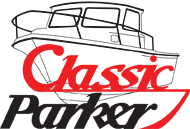MaxOut":3r9p13jg said:
Sounds like buyer’s remorse on the Seaspension :wink: Putting down a competitor’s product is typical of a used car salesman approach to sell a product that has no real merit but cost more. Obviously the longevity of the product is yet to be proven in this application but is not new technology.

One of the complications of communicating via emails or blogs is that, often times, it is very difficult to discern the writer’s tone. Collectively we try to clarify tone by using emphasized punctuation, symbols or those clever emoticons.
Unfortunately, sometimes it’s just obvious that the writer is just a jerk.
I have tried to hold my tongue and have done my best to temper conflicts between members and mods because I really like chatting with most of the guys on this site, buy you have managed to piss me off.
After reviewing several of your posts. It’s seems to be your M.O. I generally don’t respond to posts like yours but I feel compelled.
A) I didn't "put down" the competitors product. B) No buyer’s remorse here and here’s why;
1) Halo doesn’t have a product, they have a
prototype. It has not been tested and has no history in a marine application. Nor am I aware of anyone else using bicycle technology to combat the harsh marine dynamics. Their "solution" is an unproven technology in its intended use.
2) You are installing this
prototype into an inferior, mass produced pedestal. Even worse, a used mass produced pedestal. That’s right. Neither the stock Springfield or Garelick pedestals are designed to handle
seated loads in rough water. When was the last time you SAT in your seat in rough waters prior to adding a shock mitigation system?? Most people don’t. They STAND. Post manufacturers know that and build for that purpose.
a. There have been 2 replies on this blog topic, one from DaleH and the other from HM5 where one admits to having sheared a stock pedestal and the other having a Springfield tube thickness with wall thickness being ‘softer’. Why would I want to risk my safety on
the foundation of my shock mitigation system, THE SEAT POST ITSELF?
b. The Seaspension is purpose built for the harsh marine environment with double tubes, heavy base casting and a base to tube connection, which absorbs the lateral forces. They don’t make bicycle suspensions and, as an aside, marine systems.
c. While the HALO components might not be zinc or diecast, their use in a marine application remains to be seen. Additionally, the weak link IS where the stock tube connects to the base. The process of forming that tube (swaging) inherently puts the weakness right there.
3) Your own post states that the concept of using air dampeners is not new. There are many problems associated with air dampeners related to leaks and maintenance. I don’t have to adjust an “air” dampener before every trip. I bet you will. When militaries, from all over the world, look to buy shock mitigation systems, they don’t (haven’t) purchase systems with air dampeners. They buy the same technology that Seaspension is renowned for. Simple, proven technology.
4) The HALO prototype is dependent on you, their customer, to modify the existing pedestal. A pedestal which may have been exposed to weathering and corrosion, only to put loads on it for which it was not designed in the first place when new. Of course the first time someone breaks a pedestal which was self-modified and who then injures themselves, they’ll go running to a lawyer. What do you think HALO’s position is going to be?
a. Some people just don’t want to screw around with buying a pipe cutter, measuring etc. I highly doubt your install took 10 minutes. Mine did. 6 screws and it she was all done. Both you and Dale made references to all of the “adjustments” that needed to be made.
b. Seaspension design does not ALLOW for modifications. Theirs comes the way it’s supposed to…at delivery.
You stated that the Seaspension was too stiff. I can see where the Seaspension would be too stiff for you. At a buck sixty-five soaking wet, you probably wouldn’t have compressed any of the springs. However, had you asked, you would have learned that Seaspension offers various spring loads to accommodate most boaters.
Your reference to used car salesmen as "people who sell a product that has no real merit but costs more” is highly offensive and there might even be a few on this forum, either in or related to people in the auto sales industry, who would take exception to your holier than thou attitude.
Finally, as the FIRST words of my post indicated, I was not trying to bash anyone’s product. I made a single observation that I felt the product had a potential weak link and that buyers need to think about it. Much like I might tell someone to consider to think about the difference between an Avet reel and Penn Reel. Oh wait, the Avet has no real merit…it just costs more…..
I don’t have buyer’s remorse. I believe that generally, you get what you pay for. I believe that there is a market for both products. They found their market in you.
Having said what I had to say, you would NOW be correct to say I bashed their product!! :wink:


































